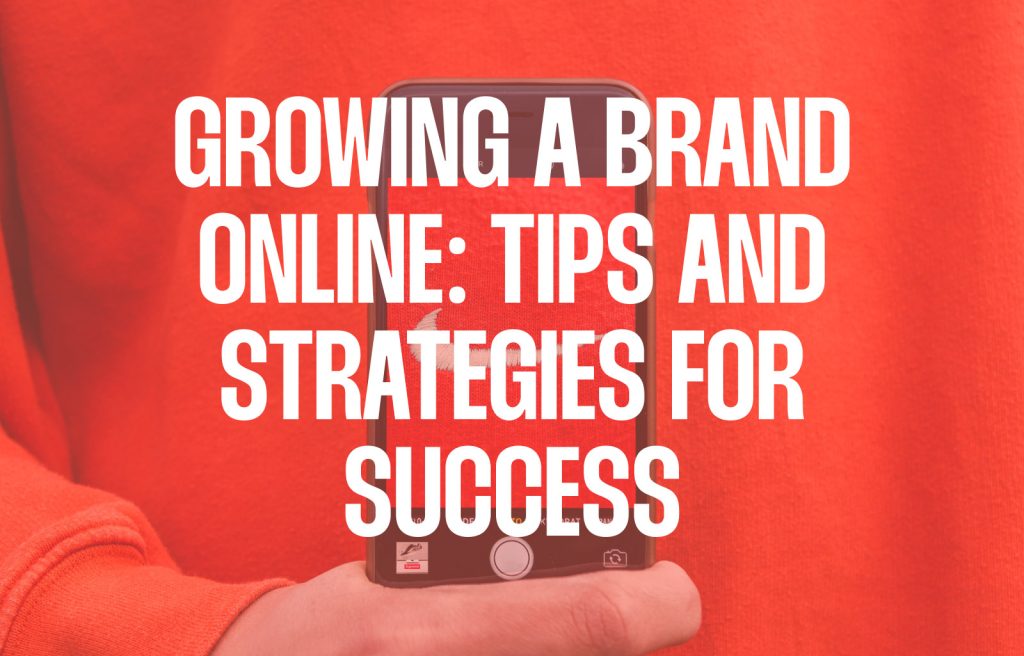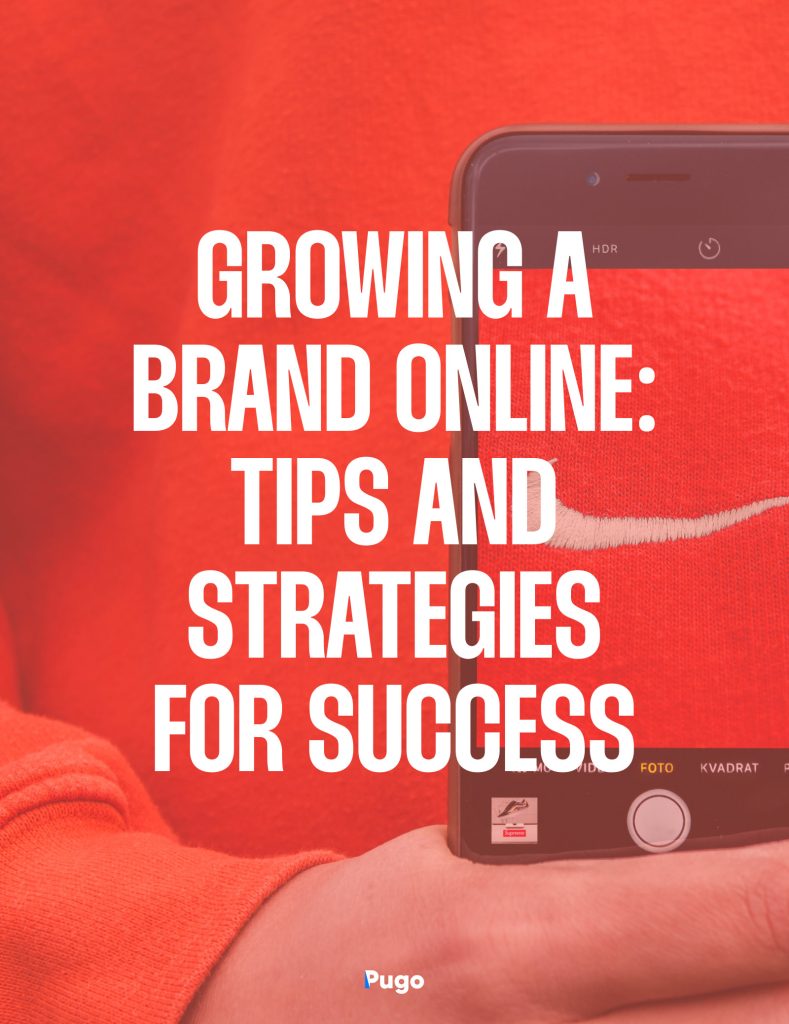Growing a Brand Online: Tips and Strategies for Success

How to Build Your Brand Online
Growing a Brand Online can be a challenging task, but it is essential for businesses to succeed in today’s digital world. The key to building a successful online brand is to define your brand identity, create a user-friendly website, develop a social media strategy, invest in paid advertising, create engaging content, monitor your online reputation, track your progress with data and analytics, prioritize customer experience, and stay up-to-date with trends and changes.
Defining your brand identity is the first step in Growing a Brand Online. You need to figure out your brand values, mission, and vision and create a unique and recognizable visual identity that is consistent across all online channels. Creating a user-friendly website with easy-to-use navigation, fast loading times, engaging content, and attractive visuals is crucial for leaving a good first impression.
A strong social media strategy can help you in Growing a Brand Online, build brand awareness and engage with your audience. You need to choose the right social media platforms for your brand, create engaging content, engage with your audience, collaborate with other brands and influencers in your industry, and monitor your metrics. Paid advertising can help you in Growing a Brand Online, reach new audiences and boost your online presence, but you need to set clear goals and metrics and monitor your campaigns closely. Lastly, it’s important to prioritize customer experience by offering high-quality products or services, providing excellent customer service, and creating a seamless and enjoyable buying experience.

Define Your Brand Identity
To start building your online presence, define your brand identity. This means figuring out your brand values, mission, and vision, and creating a unique and recognizable visual identity. Make sure your brand identity is consistent across all of your online channels, including your website, social media, email marketing, and advertising.
Answer these questions to define your brand identity:
- What are your brand’s core values and beliefs?
- What is your brand’s mission and vision?
- What makes your brand different from competitors?
- What kind of visual identity best represents your brand?
Once you’ve defined your brand identity, create your brand assets, such as your logo, color scheme, and typography. Make sure these assets are consistent across all of your online channels to create a cohesive and recognizable brand identity.

Tips for a User-Friendly Website
Your website is your online storefront, so it’s important to leave a good first impression. A user-friendly website not only looks good but also makes it easy for visitors to find what they need. Here are some important elements to consider:
- Easy-to-use navigation
- Fast loading times
- Mobile-friendly design
- Engaging and informative content
- Attractive visual design
When designing your website, keep your brand in mind and make sure your digital channels match your website’s design and messaging.

Social Media Strategy
Social media is a powerful tool for building brand awareness and engaging with your audience. Here are some key aspects to consider when developing your social media strategy:
- Choose the right social media platforms for your brand
- Create engaging and informative content
- Engage with your audience through comments, messages, and user-generated content
- Collaborate with other brands and influencers in your industry
- Monitor your social media metrics and adjust your strategy as needed
Make sure your social media content aligns with your brand identity and values, while also providing value to your audience.

Paid Advertising
Paid advertising can help you reach new audiences and boost your online presence. Here are some common forms of paid advertising:
- Social media advertising
- Google Ads
- Display advertising
- Influencer marketing
When investing in paid advertising, set clear goals and metrics, and monitor your campaigns closely to ensure you’re getting a good return on investment.
Creating Engaging Content
Engaging and informative content is crucial for building a strong online presence and attracting new customers. Some common types of content include:
- Blog posts
- Videos
- Infographics
- Podcasts
When creating content, ensure it aligns with your brand identity and values, and provides value to your audience. You can also reuse content on different channels to reach more people.
Monitoring Your Online Reputation
Your online reputation can significantly impact your brand’s success. It’s important to monitor it and address any negative feedback or comments promptly and professionally. Some critical elements of online reputation management include:
- Checking social media and review sites for feedback and comments
- Responding professionally and promptly
- Encouraging satisfied customers to leave positive reviews
- Addressing negative feedback and complaints respectfully and helpfully
- Building a strong brand image through positive online interactions
By actively managing your online reputation, you can build trust and credibility with your audience and ensure that your brand is in a positive light.
—
If you’re interested in learning more about building a successful brand, be sure to check out these articles as well:
- What is Brand Awareness & How to Increase it: Full Guide & Strategy
- Best brand book design tips
- Best Brand Color Palettes for your brand design
—
Tracking Your Progress with Data and Analytics
Data and analytics can provide valuable insights into the success of your online branding efforts. By tracking metrics such as website traffic, social media engagement, and advertising ROI, you can see what’s working and what’s not and adjust your strategy accordingly. Some common tools for tracking and analyzing data include Google Analytics, social media analytics, and advertising platforms’ reporting features.

Building an Email List and Using Email Marketing
Email marketing is a powerful way to keep your audience engaged and build relationships with them. To create effective email marketing, follow these tips:
- Get opt-ins from high-quality subscribers
- Create engaging content that provides value to your audience
- Personalize your emails to make them more relevant
- Test and refine your email campaigns for maximum effectiveness
By using email marketing, you can increase brand loyalty and drive sales over time.
Prioritize Customer Experience
Creating a successful online brand requires more than just great content and visuals. It also requires a focus on providing an excellent customer experience. Prioritize by:
- Offering high-quality products or services
- Providing excellent customer service
- Creating a seamless and enjoyable buying experience
Prioritizing customer experience can help you build a loyal customer base and generate positive word-of-mouth marketing.
Stay Up-to-Date with Trends and Changes
The online branding landscape is always changing, and it’s important to keep up with the latest trends and changes. Stay current by:
- Keeping up with social media algorithms
- Exploring new advertising opportunities
- Embracing emerging technologies
Staying ahead of the curve can help you build a strong online presence and stay competitive.

In conclusion, building a successful brand online takes time, effort, and a clear strategy. You can create a strong brand identity by creating user-friendly websites and social media channels, investing in paid advertising, developing engaging content, monitoring your online reputation, using data and analytics to track progress, prioritizing customer experience, and staying up-to-date with trends and changes.

















